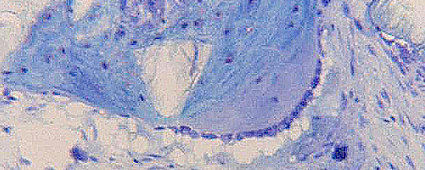
Bone grafting
When teeth are lost, the body breaks down the bone structures that once supported them. In some areas (for example, upper jaw – front teeth) the outermost covered layers of bone are only paper thin. These bone segments immediately dissolve following extraction of the tooth.
This is why it is of particular importance that only we, as specialists, extract teeth in these regions so that excessive resorption (breakdown), which can happen in many cases, can be counteracted.
Implantation requires a sufficient amount of bone volume. Even patients whose bone bass has been reduced due to many years of tooth loss can still be candidates for implantology. Today, a deficiency in bone mass can be corrected via several methods. Which method is appropriate for your case is something we can determine after your initial exam. Options range from bone replacement materials to the patient’s own bone.
In many cases, the body’s own bone is still the best material for bone grafting. Bone replacement materials differ in origin and quality. We differentiate between bone materials:
Not every bone replacement material is suited for every type of bone defect. Today, we achieve the best results with replacement materials of human origin.
In Germany, this replacement material comes from living bone donors. Only persons in excellent health are candidates for bone donation. They undergo several exams so that the risk of transmission of infectious disease is virtually eliminated. Bone donors are individuals who have bone segments removed during the course of artificial hip or knee replacement surgery. These bone segments are prepared in a multi-step process referred to as the tutoplast process. This process begins with viral inactivation and ends with sterilization of the bone material. This bone material is ultimately no longer recognized as foreign by our body and perfectly integrates into the bone defect. After a certain period of time, this foreign material becomes part of your own bone metabolism and is no longer “foreign”, but has transformed into your own bone.
Today, we can say that this material has revolutionized bone grafting technology. Bone harvesting from the hip or oral area of the patient is no longer necessary today and is not indicated in many cases.
At our practice, bone grafting is a routine procedure in almost 80% of all patient cases. Bone thickness is a deciding factor for the long-term success in implantology. Therefore, augmenting the thickness of the bone is generally required. Our 20 years of experience have shown that implants placed into thin bone cover are much more likely to cause complications than implants surrounded by thick, healthy bone tissue.
Many bone grafting techniques are available: from small bone augmentation to sinus lift, we have mastered all options and will be happy to discuss the approach that is right for you during a personal consultation.